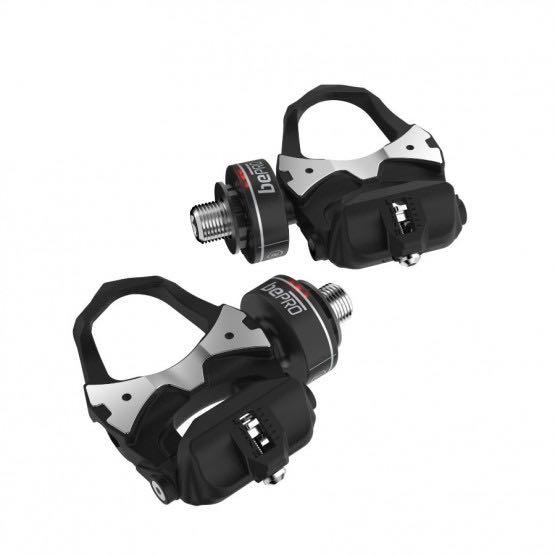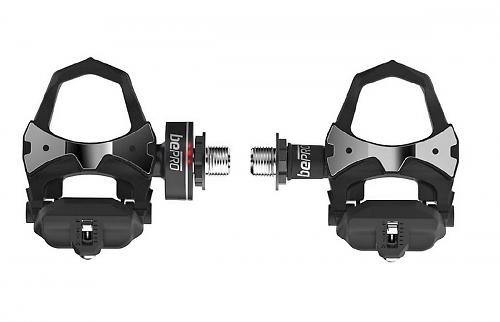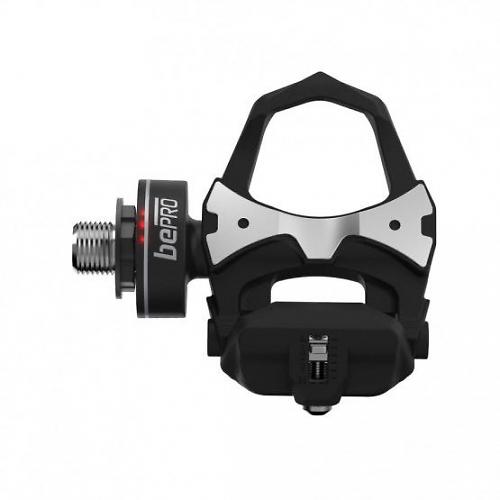- News
- Reviews
- Bikes
- Components
- Bar tape & grips
- Bottom brackets
- Brake & gear cables
- Brake & STI levers
- Brake pads & spares
- Brakes
- Cassettes & freewheels
- Chains
- Chainsets & chainrings
- Derailleurs - front
- Derailleurs - rear
- Forks
- Gear levers & shifters
- Groupsets
- Handlebars & extensions
- Headsets
- Hubs
- Inner tubes
- Pedals
- Quick releases & skewers
- Saddles
- Seatposts
- Stems
- Wheels
- Tyres
- Tubeless valves
- Accessories
- Accessories - misc
- Computer mounts
- Bags
- Bar ends
- Bike bags & cases
- Bottle cages
- Bottles
- Cameras
- Car racks
- Child seats
- Computers
- Glasses
- GPS units
- Helmets
- Lights - front
- Lights - rear
- Lights - sets
- Locks
- Mirrors
- Mudguards
- Racks
- Pumps & CO2 inflators
- Puncture kits
- Reflectives
- Smart watches
- Stands and racks
- Trailers
- Clothing
- Health, fitness and nutrition
- Tools and workshop
- Miscellaneous
- Buyers Guides
- Features
- Forum
- Recommends
- Podcast
TECH NEWS
 bePRO pedal powermeter - 4
bePRO pedal powermeter - 4New bePRO pedal-based power meter costs £347
Italy’s Favero Electronics is offering its pedal-based bePRO power meter from as little as £347.
That figure (€499) is for the bePRO S system that measures the force from your left leg only and uses that to estimate your total power output. The full bePRO system that measures the force from both legs is priced at €749. That converts to £520 at today’s exchange rate.

We’ve not used or even seen the bePRO pedals for ourselves yet (we’ve asked politely whether we can get some in for review), but Favero say that the system is:
• ANT+ compatible
• Lightweight
• Rechargeable
• Self-contained – you add the pedals to your bike and nothing else
• Look Kéo compatible
If that has got you interested, let’s go into some more detail.
The first question most people ask about any powermeter is about its level of accuracy, so let’s deal with that first.
“Provided with an advanced compensation system, bePRO can take accurate and reliable measures in any environmental condition, with a margin of error of only 2%,” says Favero.

That’s the same figure as Garmin claims for its Vector pedals and similar to that claimed by most other major powermeter brands (some claim a greater degree of accuracy). Favero says that this level of accuracy applies in temperatures from -10°C to 60°C. You’ll almost certainly not ride outside of that range. It gives you power from 0 to 2,000W and cadence from 30-180rpm.
With Garmin’s Vector system you have to fit the pedals that contain the strain gauges along with pods that process and transmit the data.
With the bePro system, the sensor sits between the pedal body and the axle thread.
Favero says that this doesn’t increase your Q-factor although it looks to us as if you might have to shift your cleats to avoid your shoes rubbing. Apart from that, the lack of any protruding parts makes us think that accidental damage isn’t going to be a huge issue unless you’re really unlucky. As I said, though, we’ve not used them.
The bePRO pedals transmit information via the ANT+ protocol which means that they’re compatible with many other devices out there, notably Gamin bike computers.
The bePRO pedals run on lithium-ion rechargeable batteries that provide up to 30hrs of continuous use when fully charged, according to Favero. The pedals will send a message to your bike computer when the charge falls below 25%.

You can fit bePRO pedals to most crank arms ( 9/16in, 20 TPI thread and at least 12mm thickness) and installation is said to be easy enough – you just tighten them in place to at least 40N m.
You need to perform a dynamic (moving) calibration when you install the pedals and Favero suggests you perform a static calibration (which involves positioning the crank arms vertically without your shoes clipped in) before every ride.
Like many outdoors products, the pedals are IPX7 certified. That means they should stand up to wet weather without any trouble.
Favero says that each bePRO integrated sensor adds only 16g to the weight of your bike. The total weight of two sensor-fitted pedals is said to be 312g. For comparison, the first generation Garmin Vector powermeter pedals that we reviewed weighed 428g.
As mentioned in the bullet points above, the bePro system is Look Kéo compatible – so you can’t use cleats from Shimano, Time or Speedplay, for example. Cleats do come as part of the package.
The pedal body is replaceable, as are the bearings, although the rechargeable battery isn’t. Still, Favero says that after 600 charges it’ll still reach 80% capacity – and 600 charges at 30hrs a go is 18,000hrs!
It looks like the software that allows you to set the length of the cranks you use and update the firmware is only PC-compatible. We’ll try to get more details on that.
If you go to the shop on the BePRO website you’ll see messages saying “Out of Stock – Reserve it”. We’ll let you know when we get more details on availability.
Mat has been in cycling media since 1996, on titles including BikeRadar, Total Bike, Total Mountain Bike, What Mountain Bike and Mountain Biking UK, and he has been editor of 220 Triathlon and Cycling Plus. Mat has been road.cc technical editor for over a decade, testing bikes, fettling the latest kit, and trying out the most up-to-the-minute clothing. He has won his category in Ironman UK 70.3 and finished on the podium in both marathons he has run. Mat is a Cambridge graduate who did a post-grad in magazine journalism, and he is a winner of the Cycling Media Award for Specialist Online Writer. Now over 50, he's riding road and gravel bikes most days for fun and fitness rather than training for competitions.
Latest Comments
- Pub bike 1 hour 10 min ago
The highway code doesn't say "If you are approaching a cyclist from behind sound your horn"....
- Disgusted of Tunbridge Wells 3 hours 36 min ago
Erm... You forgot to mention The Tyne Tunnel opened in 1951!!!...
- Destroyer666 4 hours 9 min ago
Always? So the guy is asked to appear on a podcast to discuss performance enhancing drugs and answers questions posed to him, which go beyond what...
- David9694 4 hours 28 min ago
"Babergh District Council said it had been "clear throughout" that it "had no option but to introduce charges" and could not afford to continue to...
- Pub bike 5 hours 4 min ago
Maybe it is the latest ruse for insurers to avoid payouts saying "You didn't tell us that you took the key out of the lock so we're refusing your...
- KDee 8 hours 24 min ago
I'm still running an ELMNT BOLT V1, and I've never really understood the LED's. I'm sure I configured them for HR zones, but never really look at...
- don simon fbpe 9 hours 49 min ago
Why is this not the will of god?
- hawkinspeter 12 hours 53 min ago
PKD foresaw it, though his novel was based on a different outcome of WWII, not the precursor to WWIII. Maybe the Idiocracy film is a closer fit?
- OnYerBike 14 hours 55 min ago
@Sredlums: I'm not sure I follow your logic. If someone grabs your helmet twists it, then the reason it doesn't feel good is because the outer is...
- Rapha Nadal 14 hours 55 min ago
Coming to the mid-paced Saturday club ride soon.
Add new comment
16 comments
I own the Garmin Vector 2 s pedals and at £570 for left only these look promising. It's a pain changing pedals but still the easiest method. I prefer the Look style pedals but will never buy a pair of actual Look pedals again after last year when my year old keo carbon drive side pedal sheered at the axel. Very painful and season over.
30-hour battery life? That wouldn't get me through a weekend some summers. Have they been taking battery life comparisons from Stages?
Bah-gum lad. Could buy a bloody bike for less.
Less than £350? Not many good bikes for less than £350.
Can't someone make a pedal base power meter that just fits between the crank and the pedal axle without having to sell it with a pedal attached?
Then I could screw one into the crank and then screw my speedplay pedals into the power meter. They would have a wider market. Alternatively they could make a speedplay pedal axle with a power meter attached.
Someone is in the process of getting one of these off the ground:
http://road.cc/content/news/148808-limits-affordable-power-meter-launche...
There is a product called Limits coming which might be what you are looking for
https://www.indiegogo.com/projects/limits-the-world-s-smartest-cycling-p...
Google the LIMITS product which is due at the end of the year, that may be what you are looking for
It doesn't stick out any further according to the article, though cleat may be required to be further outboard for some people to clear their shoes.
Nice price, but I really like my Keo Blade 2 pedals, and according to my horrible experiance with 6800 pedals(Super hard to clip-out even with tension set to least), I'm a little about any pedals other than Look ones.
I'd better consider crank arm based one instead...
These use look cleats. See (german) review here:
http://www.powermeter24.com/blog/der-neue-bepro-powermeter-im-test-review/
Shimano pedals are really hard to unclip the first couple of times, but they get to normal levels very quickly. When I replace the Shimano pedals or cleats on my commuter bike I always have a few hairy moments at the first couple of junctions I reach. Takes literally half a ride though before they're OK to get out of, and then a couple of days later they'll be just totally normal/sensible level of clipiness.
Cock!
Are you telling me that all this money I've spent on making the bike lighter has been wasted?
On top of the sat nav, lights and smartphone holder I now need add more weight with this in order to be seen as a serious cyclist?
Confused.
Not sure if serious.
16g extra per pedal. You'll live.
We're starting to move in the right direction price-wise now.
Although I'd be concerned about the pedals sticking out further.
I have this powermeter. They don't stick out, they're the exact same as a normal look pedal. I've had the BePro for 6 months now and it's excellent. It's an honest powermeter it just does what it's meant to do without costing the earth.